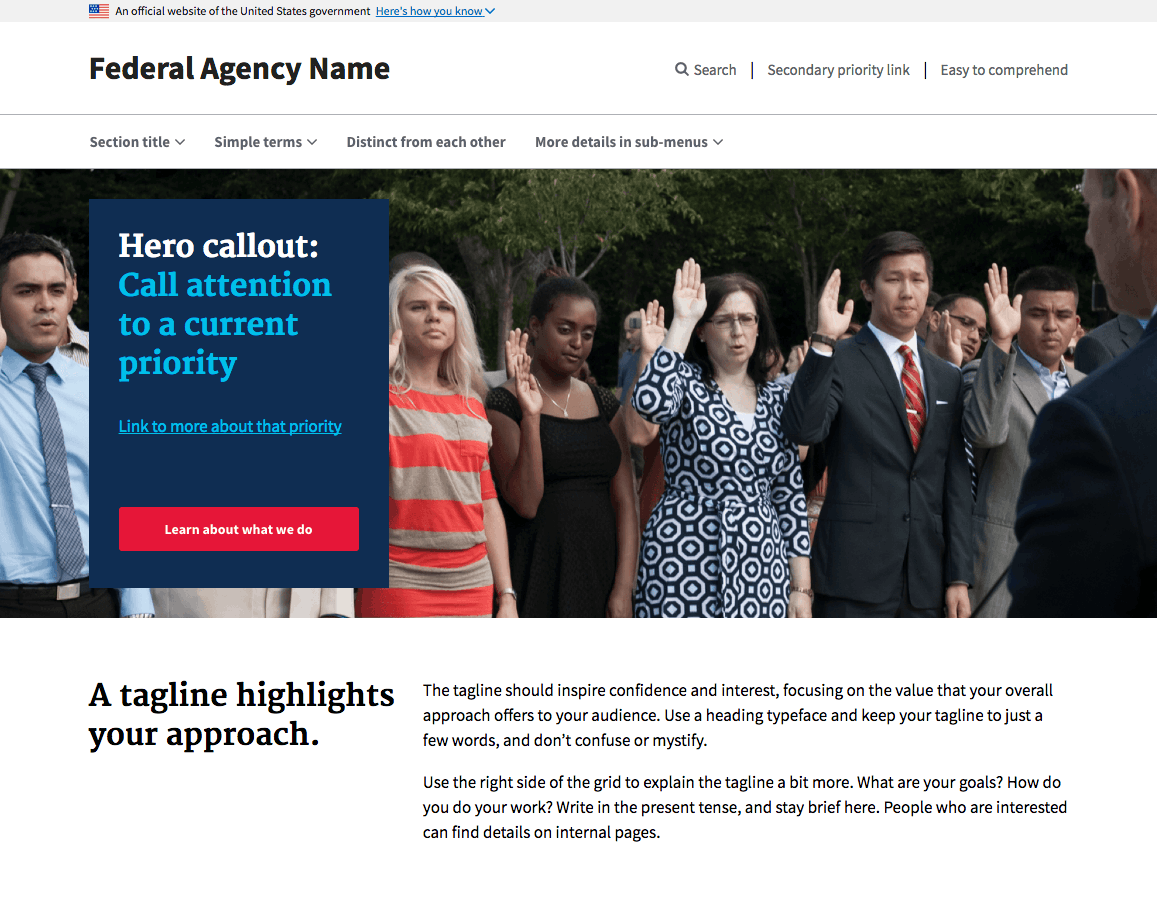
As part of the latest release of the Draft U.S. Web Design Standards, we updated our design principles to better represent the evolving goals of this project.
This update shows how we’re growing our open source community, focusing on experimenting with more complex components and maturing the Standards to be more mobile-focused.
Growing community support and examples
First, we’re going to focus on supporting and sharing within the community more. Currently, we have more than 100 organizations (that we know of) using the Draft Standards, more than 3,400 folks following the project on GitHub and contributing back to the code, and according to the GSA Digital Analytics Platform more than 62 million people used government websites that employ the Draft Web Design Standards over the past three months. The next phase of our project will continue to grow and support that community by showing examples of what agencies have done with the platform and more accurately tracking analytics and the spread of the Draft Standards.
We’re also going to continue talking to users to find more opportunities to share all the ways organizations are using the Draft Standards. By doing this we hope to inspire and help agencies continue to build stronger, faster, more secure and accessible websites and applications.
Designing further for flexibility
Now that we have a good baseline of website components (for example typography, headers, footers), we’re also going to focus on building more complex components. We’ll be taking on the deeper layers of government sites and applications, such as more complex forms and data applications, to get a better understanding of the public’s pain points in using them. In preparation for this work, we’re looking for agencies that are interested in partnering with us on custom development and research to solve their design and user experience challenges. We’ll then take the work from these partnerships and build it back into the platform and share it with all of government. If you’re an agency that’s interested in partnering with us, please get in touch with us at uswebdesignstandards@gsa.gov.
Preparing government for the future, mobile majority
Perhaps the biggest challenge for the Draft Standards will be preparing for the government audience to become a “mobile majority” audience. While much of the digital world has seen the mobile-majority shift happen, government audiences still tend to use desktop and laptop devices more than mobile, touch-driven devices according to the GSA Digital Analytics Program (you can also publicly view device usage at analytics.usa.gov). But that’s changing, and the mobile-majority audience tipping point will arrive soon for most agencies (and for some it has already passed).
The Draft Standards have always embraced and evangelized responsive web design, but shifting our focus to optimizing for smaller displays, touch-driven experiences, and slow-to-intermittent internet speeds is something we want to help the government do better.
As more government services move online, being accessible through a mobile device is crucial for lower-income and lower-tech audiences who may rely on mobile phones and tablet devices as their primary interface to the internet. This is also why we’re specifically calling out performance in the design principles to help evangelize this and provide tools for agencies to make their sites as fast as possible.
It will take time to implement, but we want to offer mobile-optimized components for agencies to get up to speed and prepare for the future in a faster and more cost efficient manner.
To do this, we need partners with interesting government challenges to help us build, research, and develop solutions for them. We’re looking to work with agencies who are:
- Implementing the Draft U.S. Web Design Standards on a new or existing project
- Tackling mobile-first performance challenges, especially if your audience has low-bandwidth needs
- Building custom components for your agency that might benefit other agencies (such as more complex input forms, maps, data visualizations and data structures, email templates, etc.)
- Have feedback or ideas on how we can improve the Draft Standards
If you’d like to talk to the team or explore a partnership, please contact us at uswebdesignstandards@gsa.gov
We’re from the government, and we’re here to help.

